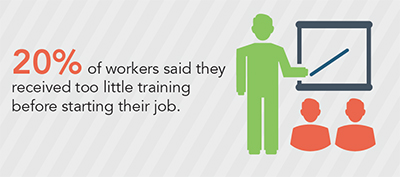Today’s workforce includes several different generations of employees and learning preferences. In part II of a Q&A series with Food Safety Tech, Laura Nelson, vice president of business development at Alchemy Systems, explains how food companies need to adjust to this new environment.
Read Part I of the Q&A: Go Beyond the Classroom to Improve Training PerformanceFood Safety Tech: Should there be different training strategies based on employee demographics?
Nelson: Yes. Our employee demographics are continuously changing and, as a result, those changes impact the effectiveness of our training program. We have five different generations, and each has a learning preference—and some are directly opposed to each other. We have employees who like to learn by reading—baby boomers like things clearly spelled out like detailed sanitation SOPs. And then we have employees who would absolutely not want to read detailed protocols but prefer learning from their fellow colleagues and their supervisor – millennials who prefer micro-burst training and learning through interactions. [Based on] our research conducted in partnership with The Center for Research and Public Policy, when we asked employees their learning preference and what works best for them, the majority (57%) said on the job with a supervisor, and (56%) said on the job with a coworker. Clearly, learning beyond the formal classroom training is taking place every day. We have to ask ourselves how consistent is the food safety program learning experience on the plant floor? Are bad habits, incorrect behaviors and short cuts being reinforced by fellow employees? In a follow-up research question, we asked how much coaching employees receive from their manager and more than 43% of the responding employees said they rarely or never receive coaching.
Our challenge as an industry is to make sure employees are learning in a consistent way through their supervisors and colleagues. It speaks to the all-important role of the frontline supervisor and the fact that we have to arm them with the knowledge and skill to effectively mentor and coach their employees and give them time and the responsibility to do it. It’s important to include soft skills training for supervisors: How do you communicate and motivate employees? How do you encourage them in a way that [facilitates] improvement and reinforces appropriate food safety behaviors?
We also have data that says the quality of onboarding training is an area for improvement—over 20% of respondents rated the quality of their onboard training not good. Some companies are still executing the ‘one-and-done’ training where you spend a full day or two trying to do all the training that the employee needs prior to starting their new job. If an employee is bombarded with food safety training—all the different sanitation information, GMPs, operational controls, SOPs, industry regulations, etc.— by the time the employee leaves for the day, the reality is that they forget more than 80% of it within 30 days. So, our challenges extend beyond the employee learning preferences and where training takes place. We have to improve our training content to really meet [employee] education level, language, and learning preferences and provide in smaller chunks to improve knowledge retention. Our critical food safety messages need to be part of a continuous rolling thunder of communication, meaning you’re not trying to train all at once but rather are building a food safety awareness program, maybe through posters, shift huddle talks or digital signage. It’s the different things you can do that don’t require additional training time but impacts employees with multiple touch points to reinforce these key food safety messages.




